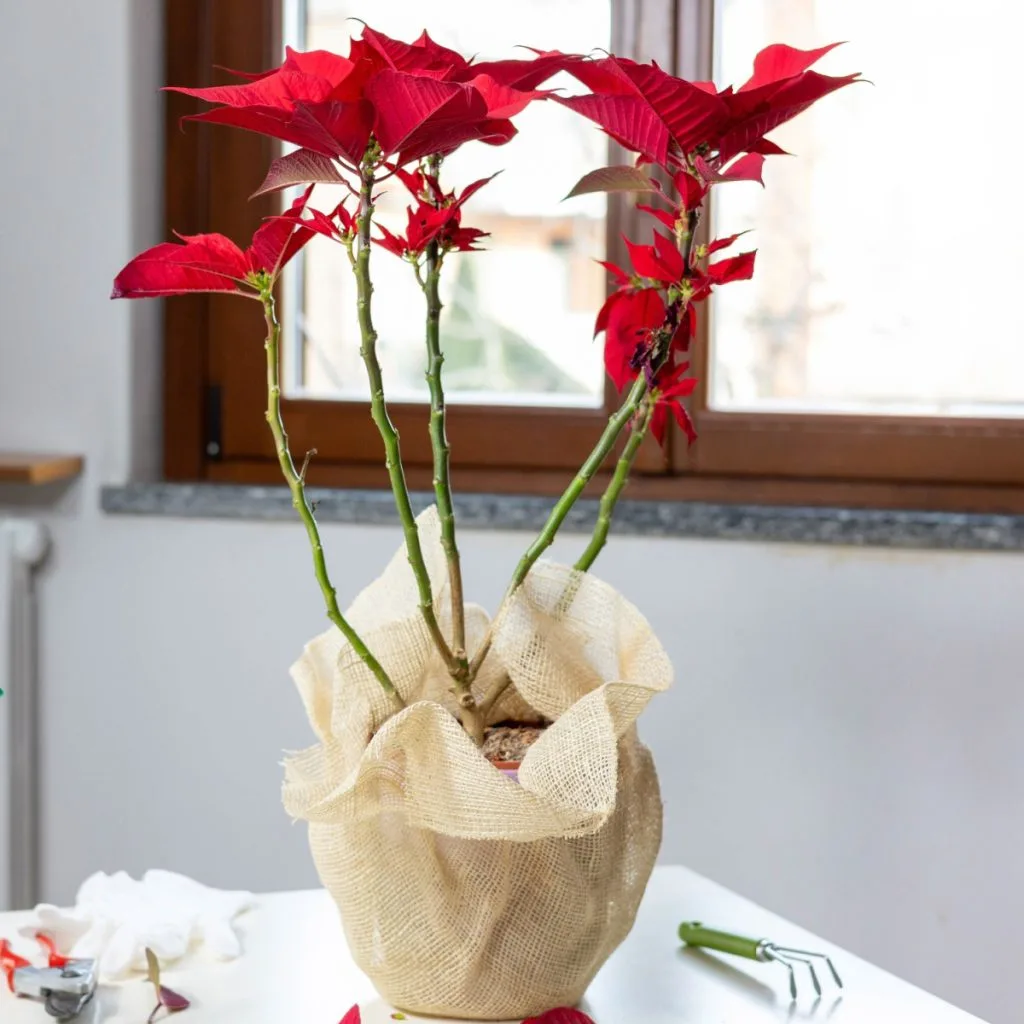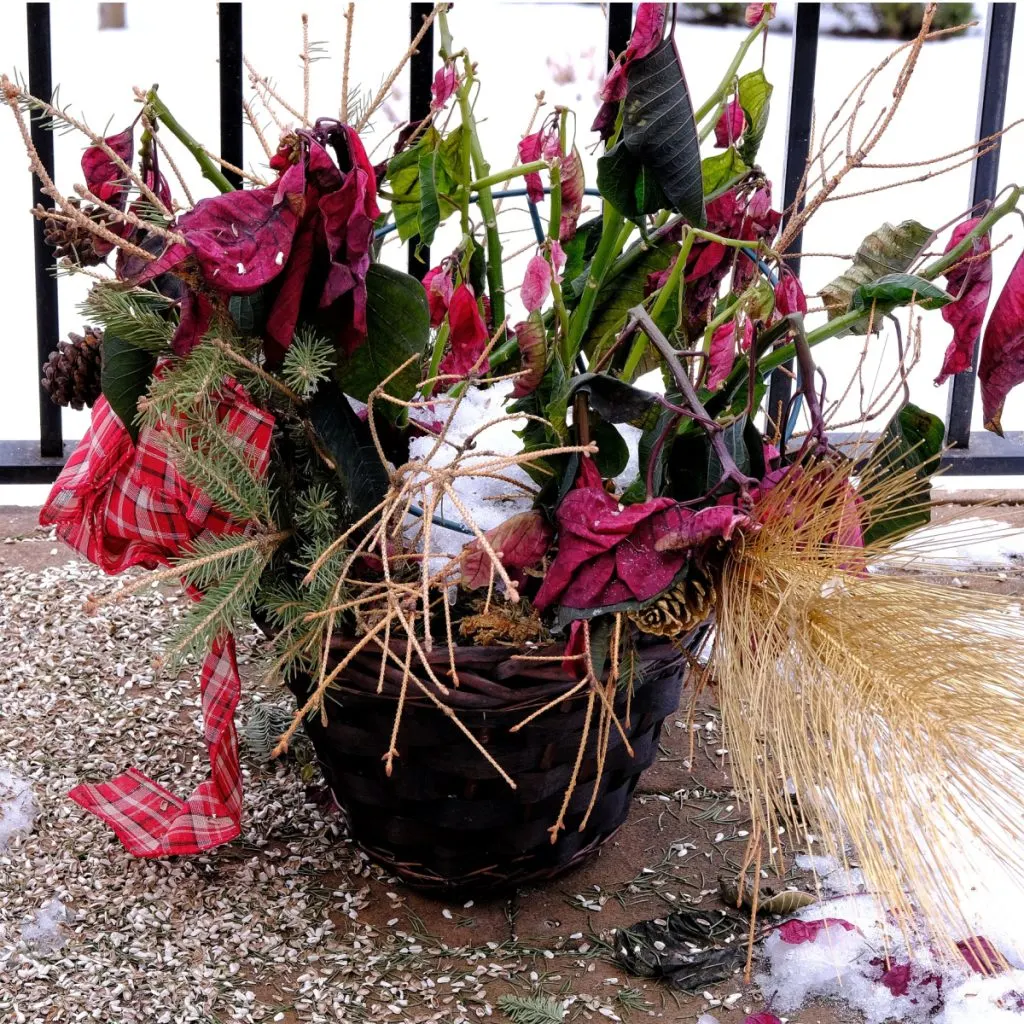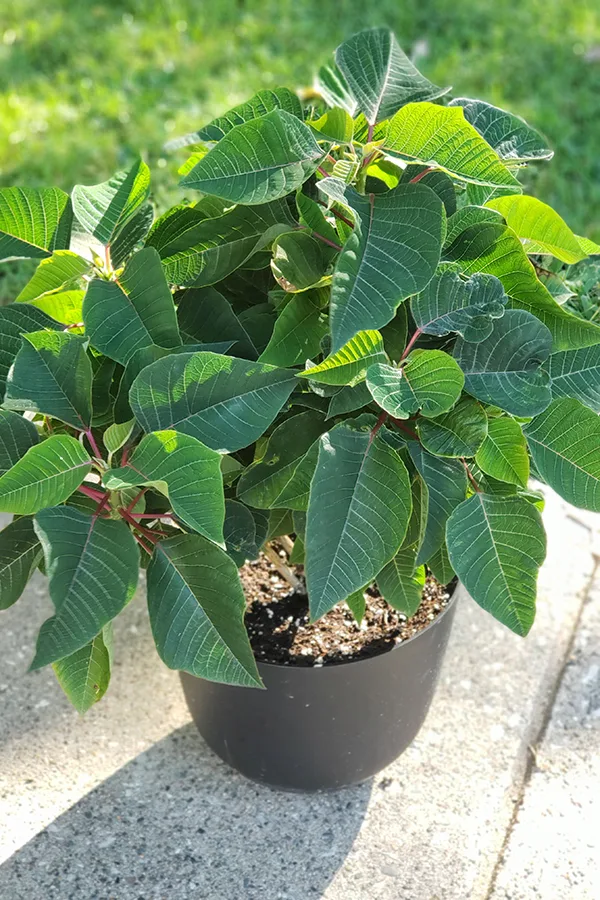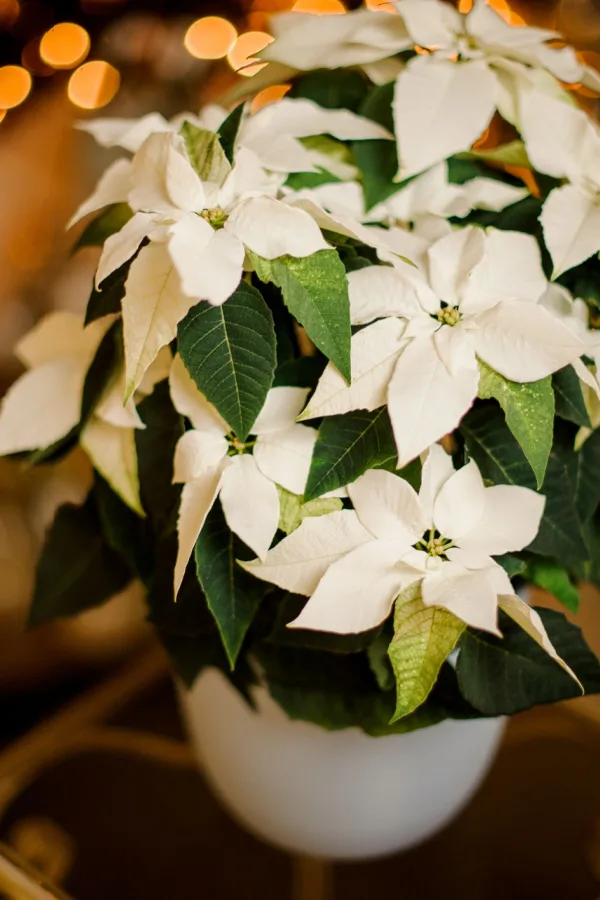Wondering what to do with your poinsettia plant after the holidays are over – and whether or not you can save it to bloom big once again next year?
One thing is for sure, what you do with your poinsettia after Christmas can make a big difference from the plant becoming a shriveled-up mess that goes into the compost pile – or one that can flower again next year to ring in the holidays!
As sad as it is, the holidays are now officially over. Presents have been unwrapped. Of course, way too much food has been consumed as well. But as a reminder of the holidays – there still sits your poinsettia plant – slowly losing it colorful blooms as each day passes.

Unfortunately, after the holidays are over, most people treat poinsettias like annuals. Many times, they end up in the garage or out on the back patio – until they finally make their way into the garbage can or compost pile.
The good news is that poinsettias are actually perennials. And with just a few simple tips and the proper care, they can be kept and enjoyed all year round. Then, when the holidays roll around next year, you can have them ready to bloom big just in time to ring in the holiday cheer – all without having to spend more cash on a new plant!
How To Save Your Poinsettia Plant After The Holidays
After Christmas Care
After the holidays are over, your poinsettia is still capable of “blooming” late into January or even February.
Although the bright colored areas on a poinsettia are often considered to be flowers, they technically aren’t. Instead, the parts that change to beautiful, vibrant colors during the holiday season are actually bracts.
Bracts are essentially modified leaves that form around a tiny flower cluster. The true flowers on a poinsettia plant are those tiny yellow blooms in the middle of the colorful bracts. Bracts can stay fresh and bright for awhile after the holidays with good care. For most – usually at least through January.

After Christmas, to keep them at their best for as long as possible, continue on with consistent watering, but don’t overwater. You will have much better success with underwatering as opposed to overwatering. Also, avoid adding any sort of fertilizer at this time.
Eventually, your poinsettia will start to drop its bracts and leaves. Don’t be alarmed as this is just part of the plant’s natural growing process. But once this happens, instead of throwing the plant out – it’s time to prune it back and save it!
Pruning Back Poinsettia Plants – How To Save Your Poinsettia Plant After The Holidays
As the leaves dry up and fall off, you can now cut back the foliage. Using small pruners or a pair of clean scissors, simply snip off the stems. Trim them back until they are only about three to four inches tall.
It will look rather pathetic during this time, but you are not harming the plant – you’re helping it! Keep the plant in the same location. Allow it to still get full indirect sunlight, and continue to water as normal.
Within a few weeks of trimming your poinsettia, you should start to see new growth emerge. Once the new growth appears, it’s time to fertilize. It’s best to fertilize once a month at this point with an all-purpose fertilizer. Affiliate Link: Indoor Liquid Plant Food for Houseplants – All-Purpose 10-10-10 Fertilizer

Spring and Summer Care – How To Save Your Poinsettia Plant After The Holidays
You can keep your poinsettia as a houseplant all year round – or you can also move it outdoors during the warmer months. Once the temperatures outdoors stay above 55 to 60º Fahrenheit, they are safe to take outside.
Keep the container in a sunny location so that the poinsettia gets full sun. Although they can survive with partial shade, they won’t grow as well. They are actually a great deck or patio plant for the summer months. If keeping as a houseplant, a sunny window is still the answer.
Continue to water as needed, never letting the soil get completely dry but avoiding soggy roots. If keeping outside, you will likely need to water more often. This is especially true during hot and dry spells. Continue with fertilizing as well during the warmer months.
Around late spring/early summer, you can give the poinsettia another good trim. This helps to prevent the plant from getting too leggy. Trim the stems back until they are about 5 to 6 inches above the soil line. The poinsettia will grow back bushier and more compact with this pruning.

Do one more pruning around late summer in August or early September. When you do this, fertilize as soon as you prune. After you perform the late summer trim though, it’s time to stop fertilizing.
Fall Care – How To Save Your Poinsettia Plant After The Holidays
If you did not keep your plant as a houseplant, once the temperatures start to drop to around 55 to 60º Fahrenheit again in the fall, it’s time to bring your poinsettia back inside. Do this gradually since drastic temperature and environmental changes can stress the plant out.
Move the poinsettia to an East-facing window so they can receive bright, indirect sunlight. Cut back on watering and add additional humidity if needed. Be sure to not fertilize during this time frame.
Forcing “Blooms” For Christmas – How To Save Your Poinsettia Plant After The Holidays
In order to get the bracts to come back with that amazing holiday color, you will need to “force” them into blooming. To do this, the poinsettias need a period of complete darkness.

It takes about 6 weeks of complete darkness for about 14 hours each day before they start to produce colorful bracts. If you want the blooms to be during Thanksgiving, you need to start the process close to October 1st. For Christmas blooming, start a couple of weeks later.
During the evening, move the poinsettia to a dark closet or spare bedroom. Ensure that there are no light sources at all in the room – not even a small night light. You can also place a large box over the poinsettia to ensure the plant is in complete darkness for 14 hours.
Once morning comes around and it has been 14 hours, bring the poinsettia out and place it back in its sunny window location. Continue to water as usual.
The color should start to appear after about 6 weeks. When the bracts have fully changed colors, you can stop placing the poinsettia in the dark location.
Your poinsettia plant will likely outgrow its pot or container after a year or two. Repot during the early spring or summer to avoid stressing the plant before its blooming cycle. Never repot while forcing the poinsettia to bloom. Use brand-new potting soil and choose a container that is about a fourth larger than its current one.
Here is to saving your poinsettia this year! For more on holiday plant care, be sure to check out our article: How To Make A Christmas Cactus Bloom Again – Get Your Cactus To Bloom A 2nd Time!
Simple Garden Life
Follow Our Facebook Page For Even More Great Tips! Simple Garden Life Facebook Page
Simple Garden Life is a website dedicated to keeping gardening fun, simple and enjoyable! We publish two new articles each week along with a new garden podcast episode every two weeks. This article may contain affiliate links.
